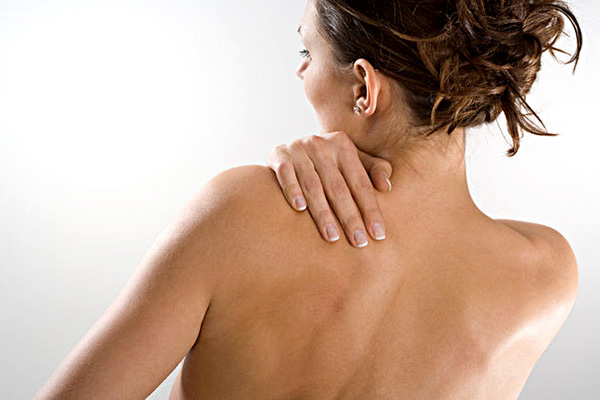Besides the beauty and joy of the holiday season, cold weather, due to low temperatures and humidity, can generate discomfort or aggravate rheumatic problems. Here are some rheumatic diseases whose symptoms worsen in winter and how to prevent their specific pain:
Osteoarthritis
Low temperatures and high humidity can exacerbate the symptoms of painful joints affected by osteoarthritis. Concerned are mainly small joints of the hand, hip, knee, hallux joint (big toe of the foot) and the spine, especially the cervical and lumbosacral.
Joint’s widening is also a symptom, instability and limitation of movement. Patients may complain of morning stiffness (stiff joints) lasting more than half an hour, the appearance of pain on movement and its disappearance at rest.
Clicking noise can occur during joint mobilization, as a result of irregularities in the articular cartilage. Most of the times these are painless and do not require specific treatment.
It is important to note the involvement of certain risk factors in the development of osteoarthritis. The most important are: obesity, age, heredity (especially the distal interphalangeal joint osteoarthritis), joint trauma, joint state changes (changes in the frontal plane knee known as genu varum – knee “O” and genu valgum knee “X”).
Unfortunately, arthritis is not curable but its painful symptoms can be improved following a few general measures such as weight loss, avoidance of strenuous exercise, correcting defective joints, muscle toning exercises, aerobics, hydrotherapy, local corticosteroids, topical capsaicin.
Fibromyalgia
Fibromyalgia is a rheumatic disease that can be further exacerbated by cold, although most studies did not show a definite link between the symptoms and the weather. Patients complain of chronic pain, diffuse and stiffness, identifying trigger points (small well defined areas situated around a joint, painful to the touch), associated with a duration of at least three months.
Patients can accuse sleep disorders, bowel movement problems, cognitive dysfunction and other somatic disorders.
Important to note is that this diagnosis is one of exclusions and that there is no miracle cure, but a set of methods that may only slightly improve the symptomatology.
Generally, treatment is complex and includes physical exercise (aerobic, resistance), and behavioral and psychological approach. If nociceptive pain (pain sensory stimulation occurs due to peripheral nerve fibers) are associating chronic pain, the doctor may prescribe antidepressants and muscle relaxant treatment.
Rheumatoid arthritis
With the cold weather, patients suffering from rheumatoid arthritis, may present an increase in joint pain and morning stiffness.
According to the recommendations made by experts, in addition to background medication, rheumatologist doctor recommended for patients to try simple exercises, performed regularly, such as walking, swimming and water aerobics (but these must be avoided in case of swollen joints).
One can try to apply heat (reduces pain, muscle relaxant) or cold (decreases muscle spasm) on the joints.
Alternative medicine is a form of extra comfort, especially Tai Chi and movement therapy combined with breathing exercises that can be very beneficial for reducing stress and pain.
Raynaud’s phenomenon
This condition is a vasospastic disorder (spasm / contraction of the muscular layer of the structure of vessels, accompanied by narrowing of the lumen) occurred as a result of exposure to cold or stress, characterized by episodic attacks and reversible color changes of the skin, accompanied by pain. Skin changes are pale (ischemia), cyanosis (hyperoxygenation) and erythema (reperfusion).
Raynaud’s phenomenon is classified into primary and secondary types.
The first variant occurs in a wider range of age (15-45 years) can affect both the fingers and nose, tongue or lips. Duration and severity of attacks are variable and, very important, in case of rare complications it may be accompanied by trophic skin (stellate scars, ulcers or gangrene).
Secondary Raynaud’s phenomenon is associated with various pathology cases (systemic rheumatic disease, erythematosus lupus, rheumatoid arthritis, systemic sclerosis, polymyositis /dermatomyositis), occlusive arterial disease, infection, etc. Patients tend to develop, more often, trophic complications (skin discoloration, swelling, ulcers or progressing towards gangrene).
By far, cold is the most common factor involved in Raynaud’s phenomenon, however, emotional stress can also be mentioned, trauma, and certain existing chemicals in cigarettes or certain drugs (beta-blockers, interferon alfa, vinblastine, bleomycin, cyclosporine).
As general measures, are recommended:
– Avoiding possible prolonged exposure to cold.
– Wearing gloves and warm socks, scarf, hat.
– Avoiding smoking, and beta-blocker medication (only with a doctor’s advice).
In most cases, the primary Raynaud’s phenomenon does not require pharmacological treatment.
Treatment of secondary Raynaud’s phenomenon concern the underlying disease (preexisting diseases – rheumatoid arthritis, scleroderma, occlusive arterial disease) and vasospasm (contraction of the muscular layer of the vessels structure, arteries are often accompanied by narrowing of the lumen). Generally, the addresses patients have frequent episodes, prolonged or severe vasospasm.


